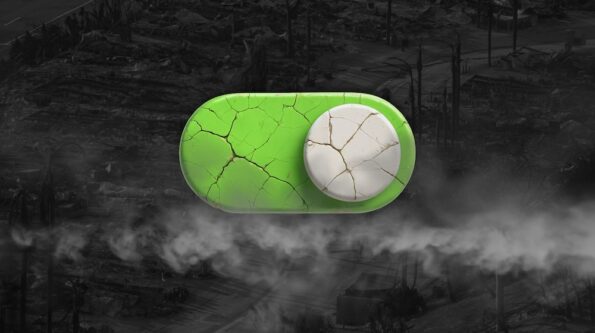Search
To search for an exact match, type the word or phrase you want in quotation marks.
A*DESK has been offering since 2002 contents about criticism and contemporary art. A*DESK has become consolidated thanks to all those who have believed in the project, all those who have followed us, debating, participating and collaborating. Many people have collaborated with A*DESK, and continue to do so. Their efforts, knowledge and belief in the project are what make it grow internationally. At A*DESK we have also generated work for over one hundred professionals in culture, from small collaborations with reviews and classes, to more prolonged and intense collaborations.
At A*DESK we believe in the need for free and universal access to culture and knowledge. We want to carry on being independent, remaining open to more ideas and opinions. If you believe in A*DESK, we need your backing to be able to continue. You can now participate in the project by supporting it. You can choose how much you want to contribute to the project.
You can decide how much you want to bring to the project.

If only it were as quick and easy as flipping a switch, like turning Dark Mode on in your smartphone or operating systems. For those who spend a lot of time looking at screens, this new option could alleviate eye strain and help save battery life. Before, the term Dark Mode would have recalled the mythic dark side of literature and/or cinema that represented a depressed humanity, overtaken by negativity, ill will, and a lack of empathy.
In this case, however, Dark Mode doesn’t refer to the abandonment of its opposite, that is, a light mode (the 20th century and the start of the 21st century can’t exactly be associated with light, despite having witnessed the total collapse of the “welfare state”). Rather, it’s as if a fog has turned our internal and external structures the color of tar. There was no coup, no strike, not even any announcement or press conference. There was no rupture or cataclysm, either, just a change in the background tone, as if reality now had less voltage.
This Dark Mode doesn’t transform what we do but it does alter the way we perceive it. Everything is the same except that everything is now dull, without hope, as if the present was powered only by inertia. Alive but having lost everything. This is the operating mode of our present, a culture that can no longer correct its flaws and must simply learn to live with them. What used to be repair is now collapse management. Each text in the series reflects some of the multiple layers of this metaphor, with war as one of the last common languages, perception as mirage and battlefield, the body as protocol, and technology as a parasitic religion. The result is a topography of collapse and sustained exhaustion.
In The militarization of the present, “war” ceases to be an exceptional event and becomes an organizational model, its logic (attack, defense, territorial control) replicated in social media, entertainment, the arts, memes and, of course, in cultural and political discourse. Confrontation guarantees attention and produces value. There are no truces because friction sustains visibility thus violence is no longer hidden. The text Say Hello to Pandemonium examines a complementary phase, that is, informational disorder. The overabundance of versions destroys any minimal agreement of what is real. In this context, each individual defends their small perceptual order as dogma while truth loses importance because it is unprofitable.
In the text BROzempic, we transfer this principle of control to the body. When an environment can no longer be stabilized, the subject stabilizes itself. The mass of flesh and life is treated as an operating system that requires constant patching. Ozempic, nicotine patches, longevity routines, and extreme productivity are all expressions of the same idea, that is, eliminating scarcity and maintaining efficiency.
Faced with this cognitive, perceptual, and corporeal decentralization, the text A Doommies’ Guide to the “New Antichrist” focuses on how technological capitalism behaves as a replacement religion. Thiel and other Silicon Valley entrepreneurs have created a faith in the market capable of absorbing the collective catastrophe and that of our infrastructures (internal and external, individual and collective), as well. Both desire and the tiny possibility of salvation are privatized.
Institutions, narratives, and individuals have learned to function with necrosis without having to reverse it. Management replaces politics, efficiency replaces imagination. Conflicts, beliefs, emotions, and desire are processed with the same logic that optimizes an application, that is, patches, updates, metrics, and usage time. Stability in the face of degradation becomes the only shared horizon.
We have learned to sustain our own collapse. The new order is not about rebuilding what breaks down but rather about ensuring that it keeps working.

Frankie Pizá (Palma de Mallorca, 1984) is a cultural critic, educator, and founder of FRANKA™️, an independent media that analyzes the intersection of arts, technology, and culture. His work centers on a simple and unusual idea: “protecting the context” in a time of increasing disinformation, creative precariousness, and algorithmic noise. He has worked on landmark projects such as Primavera Sound, Red Bull Music Academy, and Concepto Radio, and has collaborated with various media and cultural platforms. In recent years, he has established himself as one of the most unique voices in the Spanish language when it comes to interpreting phenomena. His essays balance cultural criticism and contemporary theory and seek to explain what is happening in real time, using critical and accessible language.
"A desk is a dangerous place from which to watch the world" (John Le Carré)